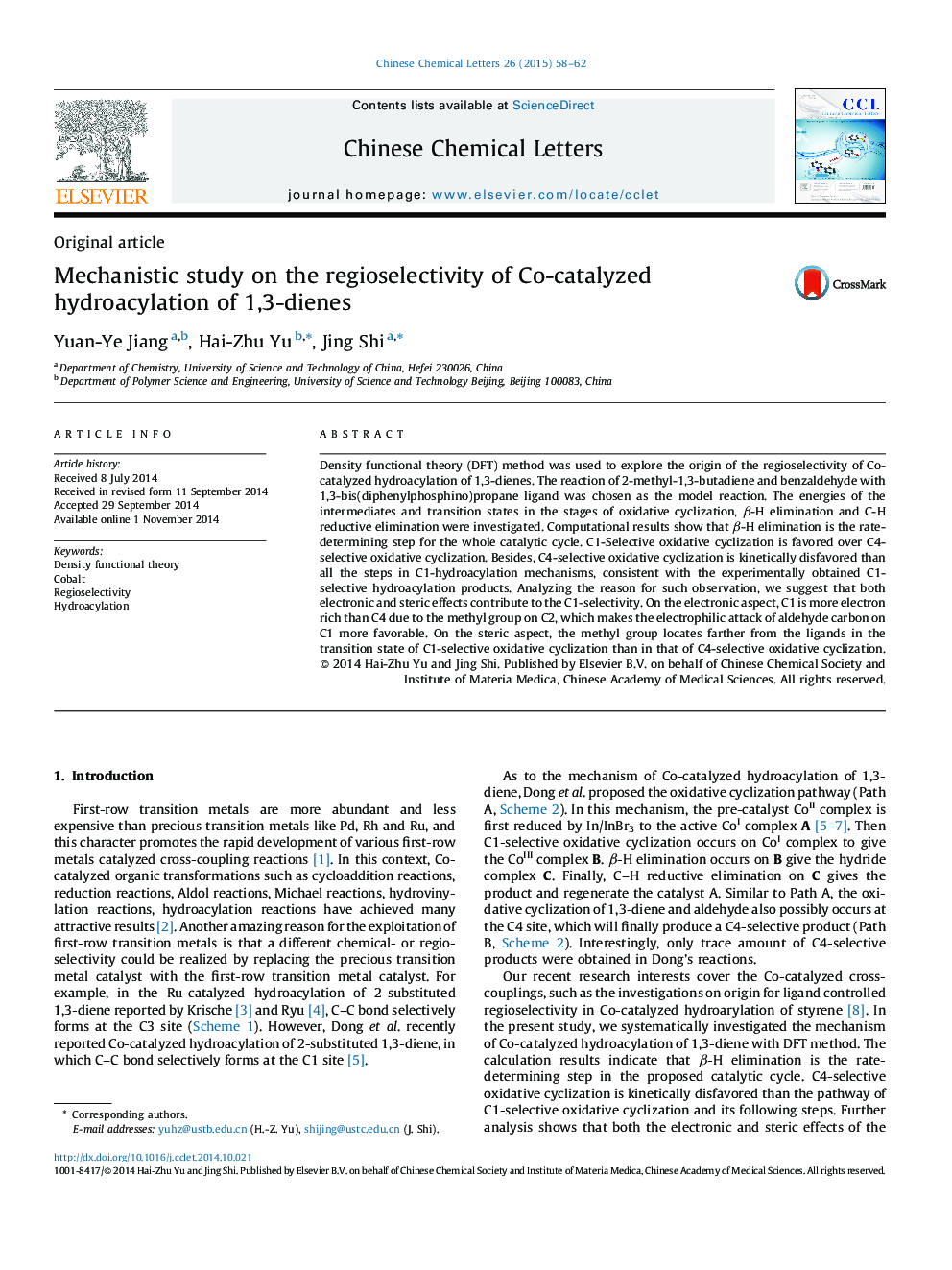| Article ID | Journal | Published Year | Pages | File Type |
|---|---|---|---|---|
| 1256969 | Chinese Chemical Letters | 2015 | 5 Pages |
Density functional theory (DFT) method was used to explore the origin of the regioselectivity of Co-catalyzed hydroacylation of 1,3-dienes. The reaction of 2-methyl-1,3-butadiene and benzaldehyde with 1,3-bis(diphenylphosphino)propane ligand was chosen as the model reaction. The energies of the intermediates and transition states in the stages of oxidative cyclization, β-H elimination and C-H reductive elimination were investigated. Computational results show that β-H elimination is the rate-determining step for the whole catalytic cycle. C1-Selective oxidative cyclization is favored over C4-selective oxidative cyclization. Besides, C4-selective oxidative cyclization is kinetically disfavored than all the steps in C1-hydroacylation mechanisms, consistent with the experimentally obtained C1-selective hydroacylation products. Analyzing the reason for such observation, we suggest that both electronic and steric effects contribute to the C1-selectivity. On the electronic aspect, C1 is more electron rich than C4 due to the methyl group on C2, which makes the electrophilic attack of aldehyde carbon on C1 more favorable. On the steric aspect, the methyl group locates farther from the ligands in the transition state of C1-selective oxidative cyclization than in that of C4-selective oxidative cyclization.
Graphical abstractThe origin of C1-selectivity in Co-catalyzed hydroacylation of 1,3-dienes was investigated by density functional theory studies, and found to be resulted from the electronic and steric effects of the substitutes R′ on 1,3-dienes.Figure optionsDownload full-size imageDownload as PowerPoint slide
